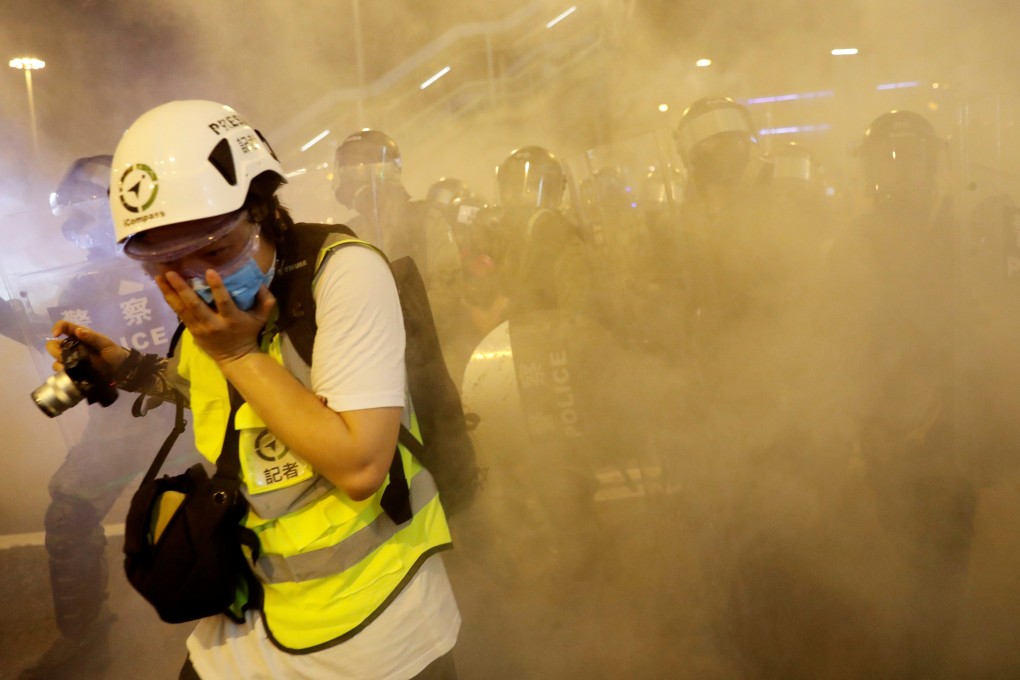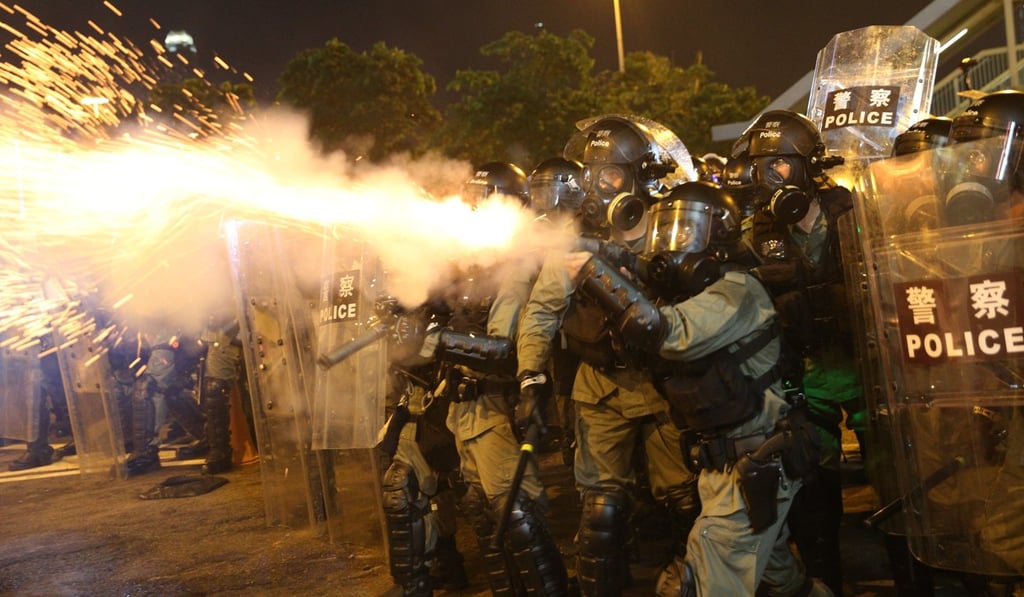Tear gas exposure at extradition bill protests causing Hong Kong journalists breathing and skin problems
- Survey by group of doctors finds almost all respondents report respiratory symptoms such as shortness of breath, persistent cough and coughing up blood
- Security expert scotches worries that police force’s gas canisters have expired

More than a hundred frontline journalists covering recent unrest in Hong Kong have reported breathing problems, skin allergies and other issues after repeated exposure to tear gas, a survey has found.
The online self-reporting survey, conducted by a group of doctors, also suggested that reporters were more likely to have suffered severe skin reactions and gastrointestinal symptoms after exposure at recent protests than after those in June.
These findings came as doubts swirled over the use of supposedly expired tear gas, with a security expert insisting that the police force’s canisters were still usable and no more harmful than any others – although their “best before” dates may have passed.
Since the citywide protests against the now-abandoned extradition bill erupted nine weeks ago, police have used more than 1,800 rounds of tear gas.

More than 95 per cent of 170 journalists who responded to the survey reported respiratory symptoms such as shortness of breath, a persistent cough and coughing up blood. More than 70 per cent reported skin reactions like itchiness and rashes, and more than half reported problems with their eyes, including reddening and persistent watering.